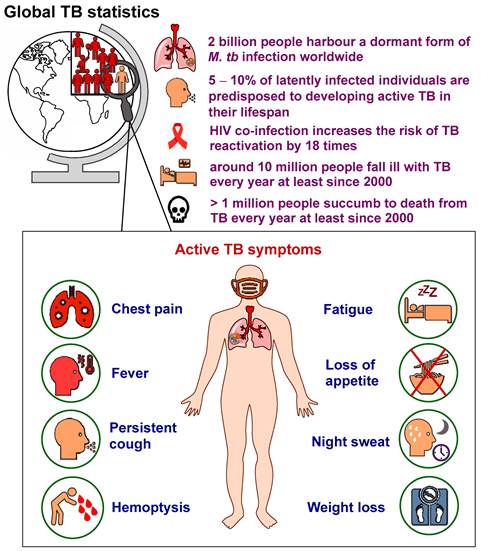Why in News:
The WHO Global Tuberculosis Report 2025 highlighted that India’s TB incidence declined by 21% (2015–2024) — from 237 cases per lakh to 187 per lakh, nearly double the global rate of decline (12%). This marks one of the steepest reductions globally among high-burden nations.
Relevance : GS 2 – Health, Governance, Social Justice
- Government Schemes (TB Mukt Bharat Abhiyan)
- Public Health Infrastructure & Disease Control
- SDG 3: Good Health and Well-being
- Role of WHO Reports in Policy Evaluation

Key Data & Achievements
- TB Incidence:
- 2015 → 237 per lakh
- 2024 → 187 per lakh (↓21%)
- Global Decline: 12% (India nearly double).
- Treatment Coverage:
- 2015 → 53%
- 2024 → 92%, with 26.18 lakh patients diagnosed (of estimated 27 lakh).
- “Missing Cases” Reduced:
- 2015 → ~15 lakh
- 2024 → <1 lakh (remarkable detection efficiency).
- TB Mortality:
- 2015 → 28 per lakh
- 2024 → 21 per lakh (↓25%).
- Treatment Success Rate:
- India: 90%
- Global Average: 88%.
- MDR-TB: No significant rise reported.
India’s Interventions & Innovations
- TB Mukt Bharat Abhiyan (launched Dec 2024):
- Screened 19 crore vulnerable individuals.
- Detected 24.5 lakh TB cases, including 8.6 lakh asymptomatic.
- Innovative Measures:
- Digital surveillance (Ni-kshay portal) for real-time case tracking.
- Decentralised diagnostics: Expanded use of GeneXpert, TrueNat, and AI-driven X-ray screening.
- Community-based screening & awareness drives through NGOs and ASHA networks.
- Nutrition support under Nikshay Poshan Yojana.
- Private sector engagement for early reporting and adherence.
Global & Domestic Context
- Global TB Scenario (WHO):
- Still one of world’s top infectious killers (~10 million new cases annually).
- COVID-19 had reversed earlier gains; India’s recovery outpaced global trends post-2021.
- India’s Goal:
- Eliminate TB by 2025 (five years ahead of global SDG target of 2030).
- Supported by National TB Elimination Programme (NTEP) under MoHFW.
Challenges Ahead
- Rural & marginalised populations — under-detection and undernutrition-linked vulnerability.
- MDR-TB management — high treatment cost and adherence issues.
- Stigma and delayed health-seeking behaviour.
- Sustainability of screening and nutritional support schemes.
Significance
- Demonstrates India’s public health success through technology, decentralisation, and mass mobilisation.
- Strengthens India’s case as a global model for community-driven infectious disease control.
- Highlights importance of synergising health, nutrition, and digital governance.
Way Forward
- Consolidate TB Mukt Bharat gains with stronger primary healthcare integration.
- Scale up preventive therapy for household contacts.
- Intensify research on TB vaccines (e.g., BCG replacement candidates).
- Strengthen nutrition and social protection for TB-prone groups.



